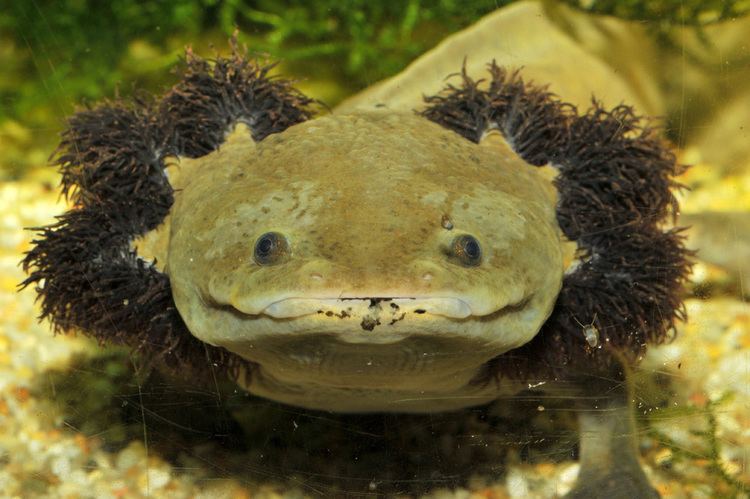Order Caudata Genus Ambystoma | Phylum Chordata Family Ambystomatidae Scientific name Ambystoma dumerilii Rank Species | |
 | ||
Similar Mole salamander, Salamander, Amphibians, Taylor's salamander, Granular salamander | ||
The Lake Patzcuaro salamander, locally known as achoque, Ambystoma dumerilii, is a neotenic salamander species.
This salamander is found in Lago de Pátzcuaro, a high altitude lake in the Mexican state of Michoacán. This is located in the Mesa Central region of the country, home to many isolated Ambystoma species. There have been claims that a subspecies is found further inland to the north-east in San Juan del Río, Querétaro, but this is doubtful due to the animals wholly aquatic nature. Dumerilii retain their larval characters throughout their entire life. This results in adults that have long, heavily filamented external gills, gill slits lined with tooth-like gill rakers, and caudal fins. Patzcuaro salamanders are usually yellowish in color, with a lighter shade on their underbellies. They have large heads and reduced limbs. They feed by suction, and eat many types of invertebrates.
Recently, this salamander has been used in research as a counterpoint to the more common captive-bred Axolotl. Patzcuaro salamanders have been hybridized with axolotls, and used in mitochondrial studies for comparison.
Due to habitat destruction, pollution and the introduction of predatory fish the population has decreased severely in the past decades. It is listed as Critically endangered in the IUCN redlist and in Appendix II CITES.
